Amid dramatic cuts to the U.S. Forest Service, nonprofit groups have had to supply the chainsaws, shovels, and manpower to clear America’s hiking trails
Crew members of the DTC relax during a day of trail work (Photo: Deschutes Trails Coalition )
Updated August 21, 2025 01:52PM
In 2022, a conservation nonprofit called the Deschutes Trails Coalition (DTC) started working with the U.S. Forest Service to build and maintain hundreds of miles of hiking trails in central Oregon.
The agreement was pretty straightforward: DTC would pay two employees to pitch in alongside the Forest Service’s own trail crew, which numbered six. The eight-person team would repair bridges, clear overgrowth, and cut out trees that had fallen across the trails over the winter—vital work that kept 1,200 miles of trails open to hikers.
As the relationship evolved, the Forest Service struggled to maintain its workforce. In September 2024, then-USFS chief Randy Moore said it wouldn’t hire back 2,400 seasonal employees for 2025, including most of its trail crews. Then, in March 2025, the Trump Administration fired 3,400 full-time USFS employees.
The staffing woes within the agency forced the DTC to step up. This summer, the nonprofit has paid for five staffers to do trail work. The USFS, meanwhile, employs just one.
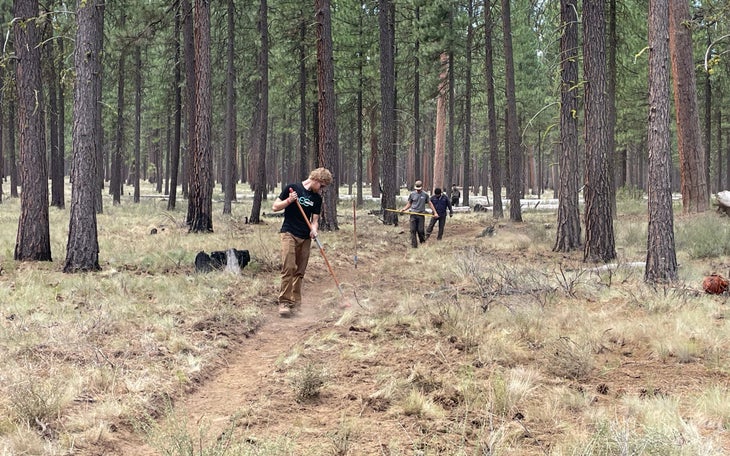
“Our crew kind of absorbed them, rather than the other way around,” says Jana Johnson, executive director of the DTC. “Our roles just flip-flopped.”
Across the country, nonprofits like the DTC are navigating similarly chaotic situations, fueled by the rapid change to federal agencies that oversee public land. On January 20, the same day he was inaugurated, President Trump froze all federal hiring by executive order. In February, the administration announced its staffing cuts to National Parks and the National Forest Service. Thousands of veteran USFS employees then took voluntary retirement or deferred resignation agreements.
Legal challenges have since reinstated some of those employees, but the USFS hasn’t divulged how many employees were fired or left the agency this year (the USFS didn’t respond to Outside’s request for comment). Meanwhile, the 2025 budget reconciliation bill, also known as the One Big Beautiful Bill, stripped funds from other USFS programs: old-growth forest protection, climate resilience and forest health programs, and tree planting efforts.
The chaos at the Forest Service and other federal land management agencies has left public lands increasingly reliant on nonprofit partners like the DTC. The problem with this new model? Grants and funding from federal agencies—money that many trail building nonprofits rely on— is also drying up. And now, some nonprofits like the DTC are starting to feel the pinch.
Nonprofits Are Operating in a New Era
If you visit a national forest in 2025 and come across someone clearing a trail, cleaning a bathroom, or collecting campsite fees, chances are high that they work for a nonprofit organization rather than the Forest Service.
The operational structure involves both parties. Johnson told Outside that the DTC operates with a great deal of autonomy when it works on public lands. Projects are assigned or approved by a USFS trails manager, but daily work plans are under the purview of DTC’s trails coordinator and trail crew leader. DTC interviews and hires its own employees, signs the paychecks, and purchases tools, hard hats, and work trucks.
“It’s a very new world,” Johnson says. “We’re the only paid crew working on the Deschutes National Forest now.”
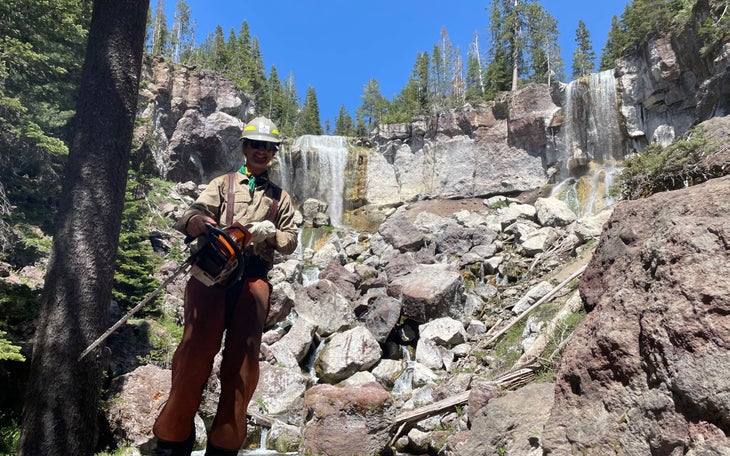
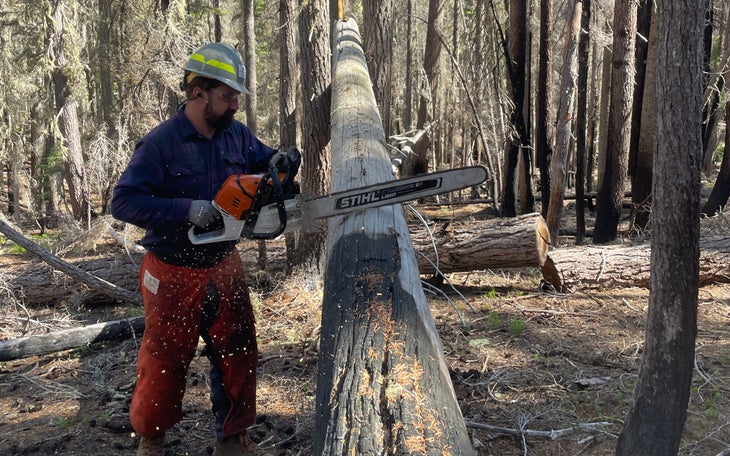
Employees wear DTC shirts, rather than USFS uniforms. Training, like First Aid classes and chainsaw certifications—once the responsibility of the USFS—are now run by DTC and another local nonprofit, the Central Oregon Trail Alliance.
In some ways, arrangements like this are business as usual. The USFS has long relied on nonprofit partners, contractors, and volunteer crews to supplement its recreation and trails programs, which include tasks like clearing trails and patrolling campgrounds. The big difference for 2025 is that nonprofits are no longer confident if or when the federal government will pay for the work.
Prior to 2025, the DTC was paid by the USFS through funds approved by the Great American Outdoors Act of 2020. The group signed an agreement with the agency in 2023, and was due about $200,000 in funding in 2025. That payment has yet to materialize.
“The message was, ‘We really don’t know if or when these funds will make it to you,’” says Johnson. The USFS did not respond to Outside’s request for comment.
Scrambling, Johnson managed to secure three different state-level grants in time to hire a full trail crew for the season.
“We got really lucky, and it bought us a little bit of time to figure out how we’re going to fundraise in the future,” Johnson says.
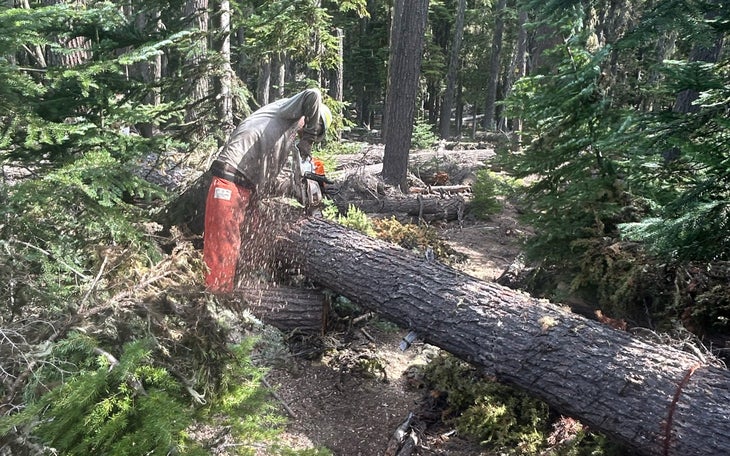
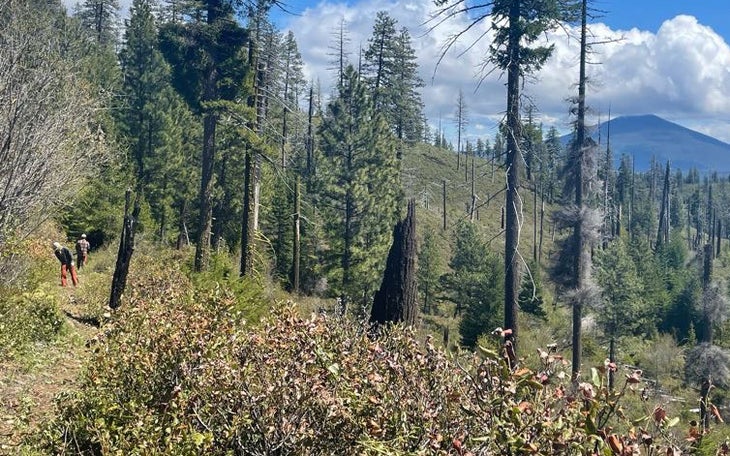
The grant money comes with limitations, though. First, the cash is temporary. Next year, Johnson will have to reapply or find new grant money elsewhere. Secondly, the restrictions on the cash are tight. Under its original funding agreement with the Forest Service, DTC could work on any trail in Forest Service territory. The state grants, however, are for specific trail projects.
Johnson says that this is a common pitfall at nonprofits like DTC—there’s grant money out there for “sexy” projects like new trails, bridge building, and watershed restoration, but not routine maintenance. But in a typical year, this maintenance can spell the difference between an open or a closed trail.
“These grants are really project specific. Basic maintenance—logging out, clearing brush, cleaning drains—those do not count as a project. Very few grants will cover basic maintenance,” she says.
Where Will the Money Come From?
The financial pressure that DTC and other trail nonprofits are under is unlikely to abate anytime soon. President Trump’s proposed 2026 budget will axe more than $4 billion from public land management agencies. In June, he signed an executive order mandating the Forest Service transfer its $2.4 billion wildland firefighting program to the Department of the Interior within 90 days, and cut all firefighting funds at the agency for 2026.
A further $1.6 billion in USFS cuts would deliver a 34 percent cut to payroll, a 50 percent cut to forest maintenance and improvement, and remove the agency’s forest and rangeland research program entirely.
At the DTC, this new funding situation has forced Johnson to rethink where the group’s money comes from. The group has tools to purchase, work trucks to maintain, and rising costs-of-living in an expensive mountain town to contend with.
“Fundraising has become a much greater focus,” she says. “We’ll continue to do some of the things that have been successful, like going after grants. That said, grants are becoming more competitive, so we need to expand.”
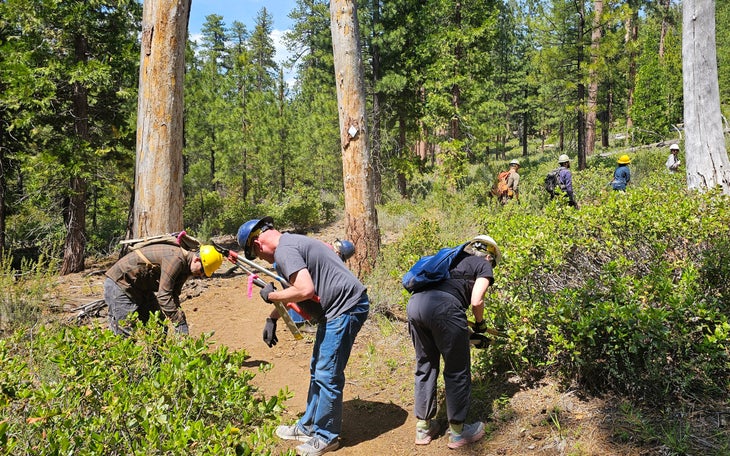
One example is DTC’s $1 for Trails program, which recruits businesses to collect $1 voluntary donations from customers. For now, the program is small: it has generated about $220,000 since it began in 2018, and only a handful of local hotels and resorts participate. The funds don’t stay with DTC either. Instead, they’re doled out to a number of local nonprofits for small projects, like replacing trail signs and hosting volunteer maintenance days.
Johnson says expanding the program is a top priority. “I think it has great potential to fund the trail program into the future,” she says.
Combined, the state grants, the fundraising efforts, and the potential for restored federal funding leaves Johnson confident that DTC will navigate the 2025 trail work season and prepare for the future. She knows that’s not the case for every nonprofit.
“We are extremely unique in central Oregon that we have so many individual partner groups and nonprofit groups that are able to pick this up,” she says. “Most places around the country don’t have the nonprofit infrastructure that was already in place here.”
A Model for Public Land Fudning Is Quickly Reshaped
Around the country, a number of similar nonprofits have had difficulties navigating the funding crisis brought on by the Trump administration.
The Pacific Crest Trail Association, which oversees the famed hiking route in California, Oregon, and Washington, decided not to hire six seasonal trail workers this year due to funding concerns. It canceled 50 weeks worth of planned trail projects, and pulled out of most of its commitments working with AmeriCorps-funded conservation corps.
AmeriCorps crews are facing their own funding crisis. In April, the Trump administration cut AmeriCorps funding by 41 percent. Since then, some regional programs, like the Lakes Region Conservation Corps, have been forced to shutter entirely. Others have been largely unaffected so far.
Montana Conservation Corps CEO Jono McKinney says his program, which hires nearly 400 AmeriCorps members each year, hasn’t lost its AmeriCorps funding. Similar to DTC, though, McKinney says other federal grants and payments have been delayed.
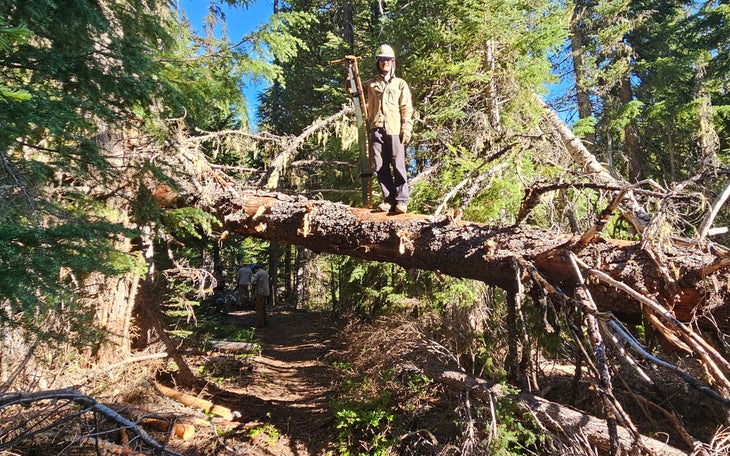
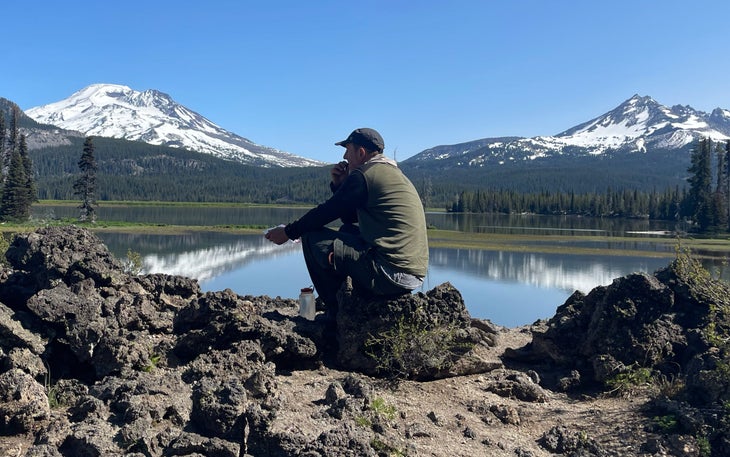
“There’s over $1 million in trail program funding under review that we’re counting on,” McKinney says. “Every day I wonder, ‘Are we next? What can we count on?’”
Some nonprofits are turning to fundraisers to replace missing federal dollars. After learning in February that all five Forest Service trail crew workers in the Sitka Ranger district had been fired, Sitka Trail Works, a trail nonprofit in Alaska, launched a funding campaign to hire the crew on as employees.
“We were already working super closely with the USFS folks in the field,” says executive director Ben Hughey. Results were mixed: Sitka Trail Works raised over $60,000 and hired four trail workers; none of the Forest Service workers took the job. Instead, several returned to the NFS after a court order forced the agency to reinstate their positions in March. Others had already moved on to other jobs with better pay. “Trail work is a skilled trade. Why not quit, get your contractor’s license, and make three times as much money?” Hughey explains.
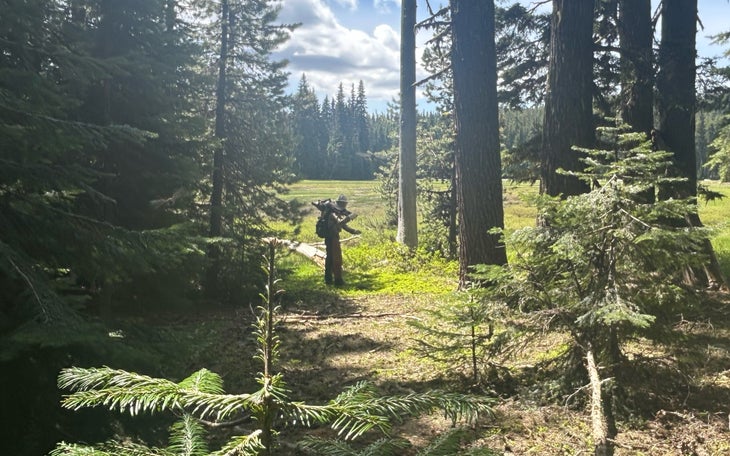
One uncommon success story is the Nevada-based Great Basin Institute. In the three years since CEO Peter Woodruff assumed leadership at GBI, the organization has doubled in size to more than 1,000 employees and increased total revenues from $20 million to $50 million. GBI has staffers and researchers tackling nearly every subset of conservation work: trail maintenance, forestry, wildfire prevention, wildlife biology, even running visitor’s centers. They partner with nearly every federal agency that manages public lands, including the Forest Service, Park Service, and Bureau of Land Management.
Woodruff says that, despite the recent growth, GBI is currently navigating what amounts to a financial tightrope. It hired about 100 more employees in 2025 compared to the previous year, but also faced serious funding concerns. The Nevada Conservations Corps—the trail maintenance program that’s part of GBI—is funded in large part by AmeriCorps grants, which face an uncertain future under the Trump administration. This March, all payments to GBI from the Forest Service were put on hold for several weeks. And the Forest Service has not approved any new funding for GBI’s forestry work in 2025, even for projects that had already been OKed.
Through one lens, public land agencies’ increased reliance on nonprofit partners could be seen as a benefit. After all, both GBI and DTC have managed to expand and hire more employees, even as they navigate an uncertain future. For both groups, there is no shortage of work to be done. But Woodruff ultimately sees the current funding landscape as a poor replacement for functional federal agencies. In an ideal world, he says federal agencies would have suitable budgets, and organizations like GBI shouldn’t have to exist.
“To see a public servant workforce get replaced with this smattering of different uniforms and backgrounds and organizations—what happened to the vision of a park ranger?” he says. “Young people don’t grow up wanting to work for GBI, they want to work for the Park Service or Forest Service. When people lose faith in that, or they’re seeing the career so clearly jeopardized, or treated with such disdain, that’s a huge loss.”


